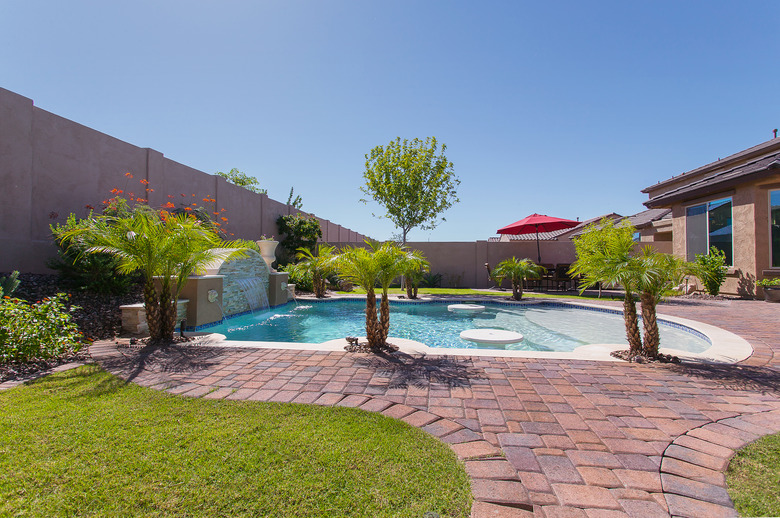When To Plant Grass Seed In Arizona
We may receive a commission on purchases made from links.
Arizona is a land with many climates. It has desert, but it also has mountains. Where you are planting grass seed in Arizona matters. When choosing seed, also be aware of the primary types of grass: grass that thrives in warm climates, appropriately called "warm-season grasses," and those that prefer cooler weather, called "cool-season grasses."
About Cool- and Warm-Season Grasses
About Cool- and Warm-Season Grasses
You can grow both grass types in Arizona. Cool-season grasses are green and lush in the spring and again in the fall, but they turn brown and go dormant during the hot summer days. These include fescues, ryegrass, and Kentucky bluegrass. Heat-loving, warm-season grasses require far less water and still manage to stay green in the summer before dying back in the fall when the weather cools. Among these are zoysiagrass, bermudagrass, buffalograss.
The times for planting cool-season grass are different than those for planting warm-season grass. And here's the thing: Lawn experts recommend that you plant both kinds of grass in Arizona, typically overseeding your warm-season bermudagrass with a cool-season ryegrass.
Tip
Always consider your own microclimate. If you live at a lower elevation in the desert, you can plant a little earlier each spring and later each fall compared to gardeners living in the highlands, where the cold weather sticks around longer in the spring and arrives earlier in the fall.
Spring Grass Planting
Spring Grass Planting
Spring is the time to plant your warm-season grass, typically bermudagrass, in Arizona. Planting in spring ensures that the grass will be lush and verdant by summer. Don't plant if you are expecting frost, but you do want to plant as early in the spring as possible to give the grass plenty of time to mature by summer. In Phoenix, for instance, the best time to plant bermudagrass is mid-April.
Fall Grass Planting
Fall Grass Planting
Bermudagrass goes dormant in the winter, but winters are often outdoor weather in Arizona, so you don't want guests sitting on your patio surrounded by brown grass blades. The fix is to overseed the lawn in the fall with ryegrass. Ryegrass, however, won't survive the summer, so you'll need to reseed it each year. Bermudagrass goes dormant but regrows, so ryegrass is the only one that requires reseeding annually.
Because you are overseeding an existing lawn, you don't want the two grasses to compete with each other for nutrients, so wait until your bermudagrass has turned brown, usually in mid-October. Plus, if you plant when the weather is still hot, your young ryegrass seedlings may become burned and die. It's a delicate balance, though, because planting too close to cold winter weather can impede germination.
Transitioning Between the Two Grasses
Transitioning Between the Two Grasses
Bermudagrass will come out of dormancy when the weather warms, but it's best if the ryegrass has already died before it emerges — again, so they don't compete for nutrients. For this reason, stop watering your ryegrass for about two weeks in early May so it will dry out and die. Once it's brown, resume watering to help your bermudagrass along.
